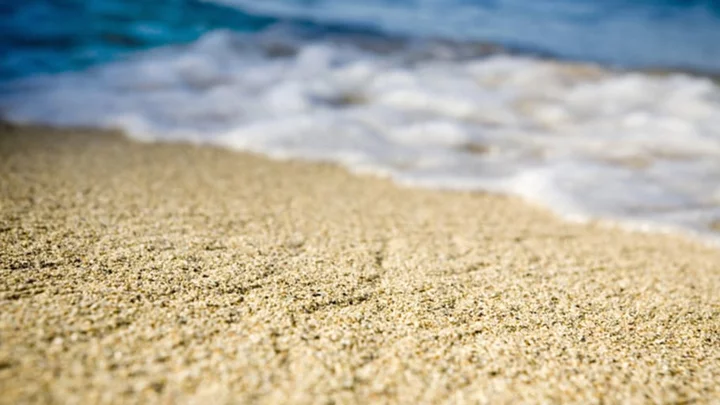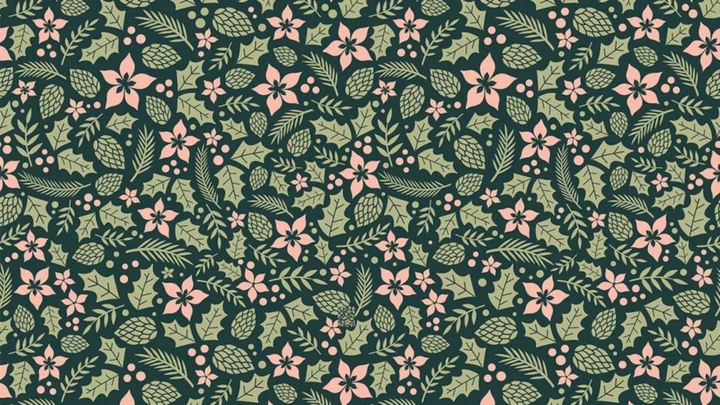Aaah, sand. Every summer, it becomes an essential part of how beach-goers have fun—or suffer—under the sun. But love it or hate it, you may have wondered where sand comes from, why it’s sometimes different colors, or what the heck it even is. Read on for the answers to those questions and more.
1. Sand is made of crystals. (And fish poop.)
Sand, by definition, consists of tiny, loose grains of material that are larger than silt but smaller than gravel. Much of the sand on beaches is made of eroded rock, like sandstone, but it can also be made of crushed seashells, parrotfish poop (which is actually very small bits of undigested coral skeleton), or the remains of calcium-containing sea creatures called foraminifera.
Sand can even be composed of crystals. Quartz is the most common mineral found in sand because of its ubiquity in Earth’s crust and its ability to outlast other minerals in the weathering process. Sands that feature large amounts of quartz are typically called silica sand, as they’re built from a latticework of silicon dioxide (one silicon atom for every two oxygens). But quartz isn’t the only semiprecious stone to be found in sand. There’s garnet, tourmaline, topaz, and others. Which means…
2. Sand comes in a natural rainbow of colors.
Many popular beaches boast of their bright white sand, but sand can be found in just about as many shades as the rocks and shells that comprise it. White Sands National Park in New Mexico, for instance, features 275 square miles of sand dunes made almost entirely of pure gypsum—probably something to be found only in a desert due to the mineral’s tendency to dissolve in water.
On the other end of the spectrum, black sand may contain high concentrations of magnetite or other iron ores, like that on Whatipu Beach outside of Auckland, New Zealand. Black sands can also be the result of volcanic activity, like Punaluʻu Beach in Hawaii, which is made of sea-dashed particles of basalt—a product of lava that rapidly cooled as it entered the ocean long ago.
Aside from black and white, there are also pink sands, like those on Elafonisi Beach in Crete, made of crushed red foraminifera shells that are mixed with otherwise white sands. Papakolea Beach’s striking green sand is made of the mineral olivine. At the Hverir Geothermal Area in Iceland, yellow granules of sulfur are left behind as moisture evaporates. Sand grains in the Al-Dahnā’ desert in Saudi Arabia are coated with iron oxide (a.k.a. rust), turning them red, while mining operations in Namibia have created blue sand from the country’s large concentrations of sodalite.
3. Sand is the world’s most mined resource.
According to the UN, the world’s industries use enough sand to build a wall 88.5 feet (27 meters) tall and 88.5 feet (27 meters) wide around the Earth every single day. That’s 50 billion tons of sand. Where does it all come from? Mostly beaches, including ocean coastlines, lakeshores, and riverbanks. In fact, a booming illegal sand trade in India is mining sand from riverbeds and leaving large pits for bathers to unwittingly fall into and drown. Gigantic sand-mining operations have exacerbated problems with flooding and erosion related to climate change.
4. Sand is used in a dizzying array of everyday materials.
Sand is used virtually everywhere and for almost everything. Look around—do you see anything made of glass? A window, a glass cup, the glass surface of your smartphone? The internet reaches your home through fiber optic cables; your building is probably insulated with fiberglass. All of these items were once silica sand, heated and treated in different ways to create different products. But glass is only one type of material made from sand.
Sand is also an essential ingredient in metal casting, water filtration, ceramic glazes, paint coatings, and even as a base for detergents and adhesives. But the biggest guzzler of sand is the construction industry. Basic building elements from mortar and stucco to concrete are all created with sand. The global urbanization boom, especially in Africa and Asia, is also one of the major reasons sand is being mined so heavily.
5. Microscopic animals make their homes in sand.
Tardigrades—lovingly dubbed “water bears” for their loose bear-like resemblance and penchant for aquatic living—are tiny animals known as interstitial meiofauna (Greek for “lesser animals”), and they’re just one of the thousands of microscopic species living among grains of sand all over the world. According to biologist Olav Giere, 50,000 to 100,000 meiofauna may live beneath every footprint in moist sand in existence. They hunt even smaller organisms, bacteria, and general detritus in their sandy ecosystem. In other words, meiofauna are big on beach cleanup. (See some amazing close-up shots of meiofauna here.)
6. Arena is the Latin word for “sand.”
This fact may not come as a surprise for those who speak a Romance language like Spanish or Italian, but arena (or, more accurately, harena) translates to “sand” in English. Because of its excellent absorption properties, sand was used to cover the ground during gladiatorial battles in amphitheaters throughout the Roman Empire. Over time, the physical space where the battles took place became synonymous with the word itself. Today, we use it to refer to a structure (often similar to an amphitheater) built specifically to watch some sort of centralized entertainment. Not too dissimilar to places like the Colosseum in its heyday.
7. Buddhist monks use colored sand to demonstrate part of their philosophy.
In a scene from the 2011 documentary Samsara, a group of older monks, faces inches from the floor, are painstakingly tapping sand from metal cylinders, leaving intricate lines of color behind as they slowly move their hands. Together, they are weaving a mandala, a representation of perfection in the universe—symmetry, beauty, divinity.
Studying a mandala is a form of meditation; a study of nature. However, in Tibetan Buddhism—the tradition that creates mandalas with sand—a mandala represents the palatial residence of a deity. Creating it is a journey toward enlightenment because the deity is said to live within its center.
As the mandala is tapped into existence over the course of days to weeks (or even longer), the monks and any observers meditate on the mandala’s divine presence. Once the design is finished, though, there is a short period of interpretation, and then the art is formally destroyed to represent impermanence, one of Buddhism’s central tenets. The sand is swept up and released into a local body of water to bless the rest of the world.
8. There’s sand on other planets.
It’s one thing to think about sand on Earth (even as a representation of the mutability of life), but it’s a little mind-blowing to realize sand exists on other worlds as well. The Apollo moon missions brought back 842 pounds of lunar rocks, pebbles, and sand that are still being studied today, and the Curiosity rover has played in the famed red sands of Mars for more than a decade. What’s even wilder are the extraterrestrial dunes.
According to a 2022 study in Nature Astronomy, sand dunes can be found throughout the solar system. Satellite imagery from Venus, Earth, Mars, Titan, Triton, and even little Pluto all show evidence of aeolian (wind-produced) surface features. But their variations in patterning may give us clues into how they were formed which, in turn, may provide insight into the composition of the worlds themselves.
For example, the dunes on Pluto are hypothesized to be made of methane or nitrogen ice, but in order to transport those particles, the winds on Pluto would need to blow “excessively fast,” according to the research team. Instead, they think Pluto’s dunes may be sublimation waves–a phenomenon where a solid (in this case, the frozen methane or nitrogen) skips its liquid phase entirely and turns directly into a gas from the winds. The result is a ripple effect that looks similar to dunes, but isn’t due to sediment erosion like a normal dune.
This article was originally published on www.mentalfloss.com as 8 Granular Facts About Sand.









